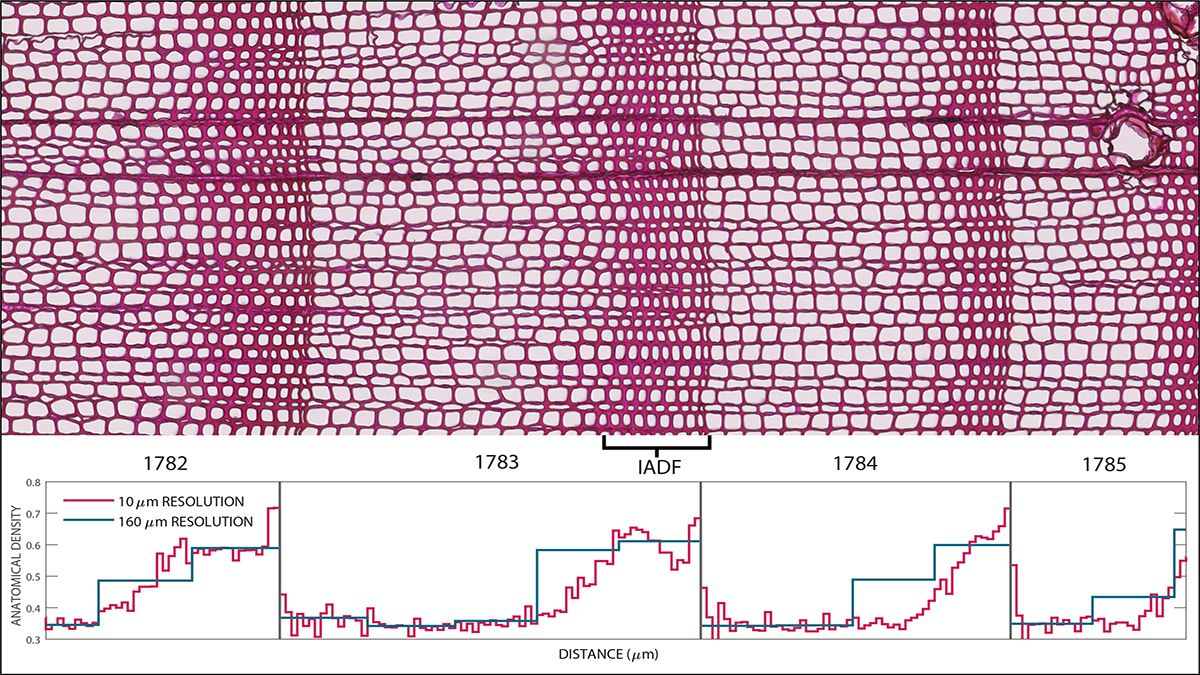Editors’ Highlights are summaries of recent papers by AGU’s journal editors.
Source: Paleoceanography and Paleoclimatology
Tree rings are well-loved archives of inter-annual climate, readily visible to onlookers. Look a little closer and seasonal variations can be detected within rings. In a study of Swedish trees in the 18th century, the summer of a major volcanic eruption had yielded confusing results, meriting a second look by Edwards et al. [2022].
After slicing wood 10 microns thin, the authors used microscopy to peer at individual stained cells (figure above), with the higher density “latewood” being the familiar darker portion of visible tree rings. Working at very fine resolution, they picked out growth fluctuations within an individual summer. The cells within the annual rings of temperature sensitive trees normally reveal if the growing season was hot or cold; however, that interpretation was in question for the summer of 1783. The evidence for an apparent cold summer didn’t fit with historical records of a heatwave. When proxies disagree, the next question is why: for the 1783 heatwave at least, that conundrum has been answered.
Rather than a weather anomaly, the trees were suffering under an acidic volcanic fog, or vog, from the Laki eruption in Iceland. Both middle age and juvenile Scots pine trees from central Sweden capture growth disruption at the same time as the acidic cloud from the Laki eruption, also linked to crop failures and respiratory deaths in humans. The careful connections between historical records and fine-scale microscopy provides new insights into how hazardous volcanic eruptions caused direct suffering among plants and people in that hot summer of 1783 in the midst of the otherwise cool Little Ice Age.
Citation: Edwards, J., Anchukaitis, K. J., Gunnarson, B. E., Pearson, C., Seftigen, K., von Arx, G., & Linderholm, H. W. (2022). The origin of tree-ring reconstructed summer cooling in northern Europe during the 18th century eruption of Laki. Paleoceanography and Paleoclimatology, 37, e2021PA004386. https://doi.org/10.1029/2021PA004386
—Sarah Feakins, Associate Editor, Paleoceanography and Paleoclimatology

